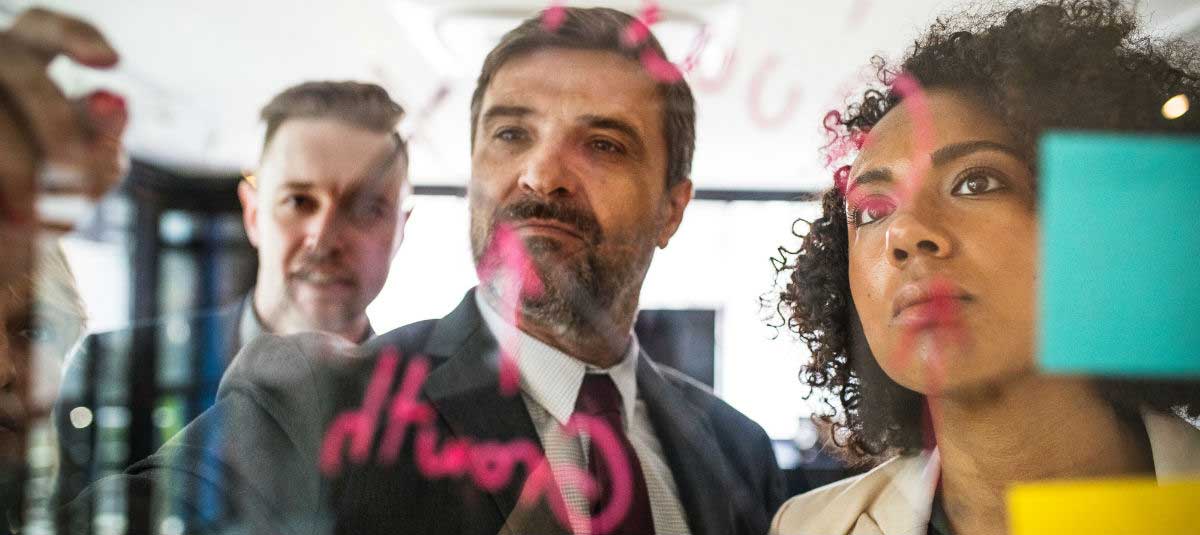How to Grow Your Development Team the Right Way

Request a Demo
Learn how top nonprofits use Classy to power their fundraising.
Development teams come in all shapes and sizes. From the one-man shop to large-scale operations, you all share one common goal: to raise as much funding as possible so that you can expand the reach of your organization.
In order to do that, many organizations get to the point where they have to grow their development teams. In an industry that places a heavy emphasis on lean staffing and efficiency, however, the decision to expand the team is not an easy one to make.
Here are four basic steps that can help you determine when to expand and how to prepare for new development team members.
Step 1: Assess the State of Your Workload
When you feel frustrated and overwhelmed by your to-do list it’s easy to picture how a new team member would be helpful. However, bringing on new people isn’t always the best solution. Elizabeth Eyre and the Mind Tools Team stress it’s just as vital to understand when not to hire as when to hire. Here are some of the things they say you should consider when you assess the hiring needs of your organization:
i. Does your extra workload have anything to do with seasonality, one-time projects, or the temporary absence of a staff member?
While bringing on someone new might improve your workflow in the short term, an imbalance could occur down the road and force you to later let that person go. A temporary position is a better fit in this case.
ii. If your staff is complaining about the unmanageable size of their workload, is it possible some of the complaints stem from inadequate time management?
Speak to each team member about their workload and explore any efficiencies that can be implemented before moving forward.
iii. Do you leverage your entire network for support in your endeavors?
Consider how volunteers, board members, and other staff members might reinforce your efforts. Even when you’re surrounded by resources, it can be difficult to ask for help. Recognize when it is appropriate to pass a task along to another staff member and when you can leverage the network of your board and volunteers to meet your fundraising goals.
iv. What is the state of your business and the overall economy?
Evaluate the health of your organization and maintain a pulse on the economy of giving. According to The Indiana University Lilly Family School of Philanthropy, “Individual giving is affected by available disposable income at the household level, wealth, and growth in the S&P 500.” In this sense, giving can be considered a luxury good. With more disposable income, a higher percentage of income is spent on giving. If the state of the economy has impacted your organization negatively, it’s likely best to hold off hiring and focus on any workflow efficiencies you can implement in the meantime.
Step 2: Build Your Development Team Structure and Identify Your Growth Strategy
If your answers to the above questions reveal a need to expand your team, you must then decide how an addition might affect the team’s structure and operating efficiencies. According to our recent interview with a San Francisco based fundraising professional, “Development departments at nonprofit theatre companies are typically broken down into individual giving, institutional giving, and corporate giving. Within individual giving, large development departments break up the fundraising responsibilities between what are typically called development officers.”
As the team grows, you may break down the individual giving team even further by dedicating members of the staff to donor tiers organized by gift size. An individual giving associate typically works with donors who give $1 to $1,999 a year, while a manager of individual giving might deal with donors giving $2,000 to $11,999 a year. This allows the director of development to devote their time to donors giving $12,000 or greater a year.
In addition to positions focused on gifts, our conversation also revealed it’s also common to see titles dedicated to planned giving and event planning.
Donor Stewardship and Special Events Coordinator
This position works to assist the director of special events with events designed for donor stewardship and cultivation such as annual galas.
Director of Special Events
At larger organizations, this position might focus on planning specific fundraising events throughout the year. At smaller organizations, this person would likely also be responsible for donor stewardship and events not directly related to fundraising as well.
Director of Legacy Giving (Planned Giving)
This director is typically in charge of creating a planned giving program and stewarding the donors of that program. For example, if a donor wishes to write your organization into their will, they would arrange this with the director of legacy giving.
What positions will best serve the needs of your donors? Examine the makeup of your donor base to better understand where you should focus your efforts. The structure of your development team directly affects the amount of attention each group of donors receives. As your communication strategy is a large part of donor stewardship, your organization will want to structure your team to ensure each donor has an optimal level of support.
Read Next: 14 Management Tips for a Growth Mindset
Step 3: Hire the Right Candidate to Meet Your Development Team’s Goals
Who you hire to your development team has a lot to do with the team’s goals. Once you identify your biggest needs, look for candidates who embody qualities complimentary to your initiatives.
Use these questions to help you further narrow down the right candidate for your needs.
i. Do you want to reduce donor churn?
Look for someone with excellent interpersonal skills and a background in communications. The candidate should possess a clear willingness to go the extra mile. This person should also have attention for details—personal touches can go a long way to foster quality relationships with donors. They should be persistent and understand the importance of “try, try again.”
ii. Do you plan to organize larger events and increase their ROI?
An ideal candidate for event management should be results and checklist driven. They are likely an organized person who does well under pressure. Someone with event management experience and a background in finance and accounting would bring a lot to your development team table.
iii. Do you need someone to launch a new email marketing series?
This should be a numbers person, a strategic thinker who gets excited about building and testing strategies for specific campaigns. Someone with a team attitude, good communications skills, and a background in marketing would be a savvy investment for your development team. They should also be comfortable with online measurement tools and eager to learn more.
iv. Do you want to introduce a peer-to-peer fundraising program?
This person will interact with your fundraisers frequently and should be well versed in communications, as well as very personable and approachable. They should be creative and comfortable using social media. A background in customer service is a plus, as these skills are highly transferable to working with donors.
Step 4: “Fire Yourself”
Along with hiring someone new comes the necessary evil of “firing yourself,” a term used by the CEO of Buffer, Joel Gascoigne in his blog post titled, “Firing myself, again.” In order to get the most out of your new development team member, you will have to let go of some of your own tasks and projects. In other words, you have to “fire yourself” from certain elements of your own job. Gascoigne astutely observes the difficulty in doing this, pointing out that many leaders put this off, stalling their organization’s growth. He claims “by hiring people for your key skill tasks, they can focus fully and do a better job.”
Yes, you might be really attached to certain projects you’ve worked on, but it’s important to let them go for the overall health of the organization. Consider how each person best contributes to the whole picture. Make each assigned task a deliberate, strategic action and free up your time for the most important things.
As your organization continues to grow, Gascoigne says you should recognize the cyclical nature of “firing yourself.” Use the questions from step one again and again to reevaluate the pain points of your department. “When everything feels somewhat chaotic, it’s a great time to think about firing yourself from one or more of the areas,” Gascoigne says. “And that chaos is healthy I think.”
A few of his final words? “Embrace it and enjoy letting go.”
After you’ve established your need to expand your development team, take the time to align your team’s goals with the skill set of your new hire and “fire yourself.” Thoughtfully transfer responsibilities to the new member and communicate to the team how those tasks contribute to your overall objectives.
Subscribe to the Classy Blog
Get the latest fundraising tips, trends, and ideas in your inbox.
Thank you for subscribing
You signed up for emails from Classy
Request a Demo
Learn how top nonprofits use Classy to power their fundraising.
 Explore Classy.org
Explore Classy.org 

